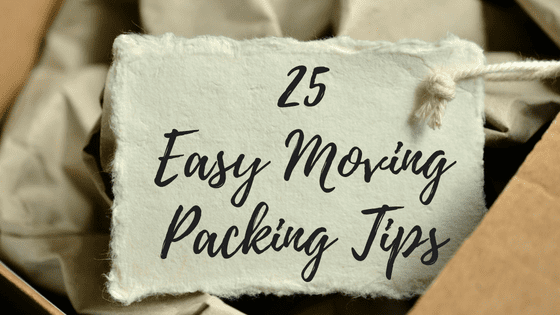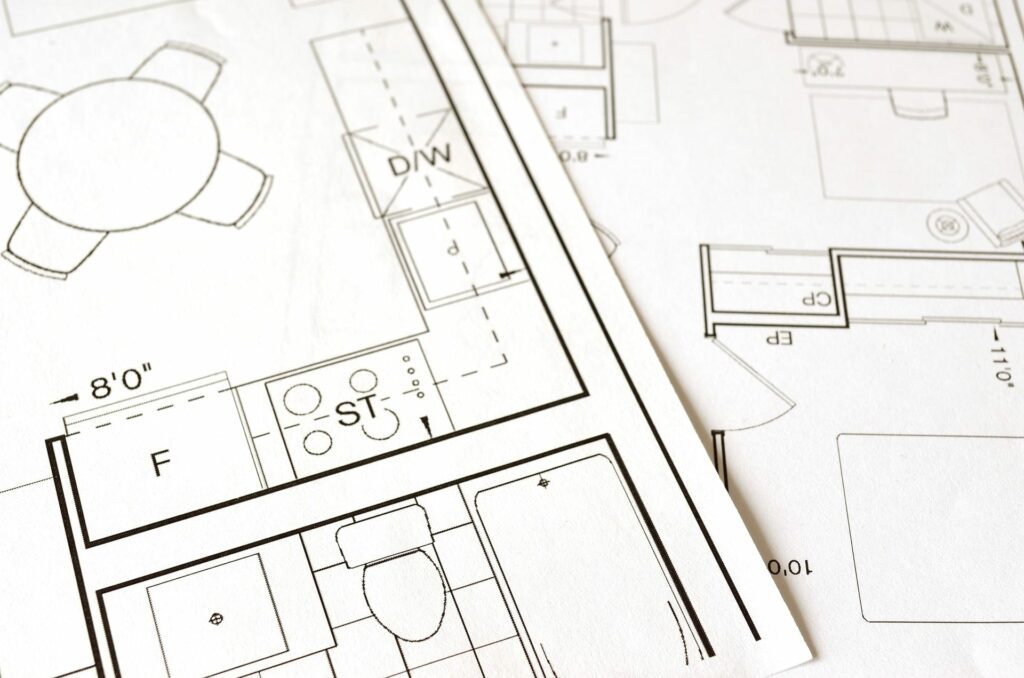25 Easy Moving Packing Tips

Are you in the process of moving houses and looking for easy packing tips? Moving homes is a much more complex process than just packing boxes. Knowing how to pack up a house will help with unpacking and make the experience far less stressful. Follow our 25 moving packing tips for the most seamless move you’ve ever had.
1. Make an inventory system (Red Box A = kitchen utensils, dishes, sponges)
Having a list of what items are in which box will make unpacking so much easier. Plus, it will save you from unpacking multiple boxes while looking for a specific item.
2. Create a master to-do list
Write down everything you need to do up until the day you are moved in. Have separate checklists for packing and non-packing essentials and make sure every box is ticked.
3. Create a calendar and schedule your to-do’s
Use either Google Calendar or use a physical one to keep yourself on track. Schedule days to pack up certain rooms, and write down weekly tasks like calling the cable company or researching movers.
4. Label everything
Make sure to label boxes for where they are headed, not where you packed them. Something that was once in the basement of your old home may be in the dining room in your new one. Premade printable labels here: https://staging-guardianlive.kinsta.cloud/help-desk/moving-box-labels/
5. Color code each room
Color code your boxes and remember your system. (Red = bedroom #1, while yellow = the master bath) This will help your movers know where to put all of the boxes and will keep you organized while unpacking.
6. Pack by room, not by item
Don’t pack all like things together if they do not belong in the same room. Instead, pack by room to save time that would have been spent sorting, giving you more time to enjoy your new home.
7. Pack the moving truck by room
As you load up the moving truck, keep boxes from the same room together. This will make unloading the moving truck easier, and will likely save the movers a few trips.

8. Give movers a copy of your floor plan
This will help them know exactly where things belong. If you are using a color-coded system, indicate rooms and colors on this floor plan.
9. Don’t overpack boxes
You may feel like it’s easier to just jam everything into one box, but, you’ll quickly learn that this is not the way to go. It’s better to have more boxes than to have ones that are impossible to carry or are overflowing.
10. De-clutter before and after moving
The best way to do this is to sort items by category. Go through all books, clothing, toiletries, etc. and get rid of anything you don’t use or no longer need. The less you have to pack the better! As you unpack, evaluate your belongings again. Do you truly need it? If not, don’t bring unnecessary clutter into your new home.
11. Tape cords to their appliances
Before disconnecting cords, make sure take a picture of them to remember where they go. Once disconnected, tape all cords to the appliance to keep everything together. This saves you from untangling cords and trying to remember where they go.
12. Pack cleaning supplies separately
Pack your cleaning supplies separately. You’ll want to have easy access to them to clean up any unexpected messes while moving out, as well as messes you encounter while moving in.

13. Set items aside to sell or donate
While you are packing, set aside anything you no longer want or need. You can either donate the items or make some extra spending money by hosting a yard sale.
14. Check for original electronics boxes
Check and see if you have any of the original boxes for your electronics. These will be the safest places for them. If you do not have the original boxes, make sure to pack all empty space with blankets or bubble wrap.
15. Pack ahead
Don’t leave any packing to the last minute. Start by packing up seasonal items you know you will not use, and work your way from least used to most used items until the day of the move. This will alleviate last-minute packing stress.
16. Pack fragile items early on
Your fragile, oddly shaped items are going to be the hardest to pack and protect. Give yourself ample time to figure out the logistics of packing and moving them.
17. Use small boxes for heavy items
Choose small boxes for your heavier items to help avoid overpacking. Another option is to use a rolling suitcase, as it will be easier to move around than a heavy box.
18. Pack dishes vertically
Packing dishes vertically will help avoid damage. Make sure to wrap them in bubble wrap, blankets, or packing paper to further protect them. Do not use newspaper, as the ink could stain your dishes.
19. Pack a “first-day” box
Pack a box of all of the things you’ll need for your first day in the house. Things like trash bags, chargers, paper plates, and utensils are a good start.

20. Pack a suitcase as if you were going on a trip
Aside from your “first-day” box, pack a suitcase as if you were going on a 2-day trip. This way, you will give yourself a few days before having to unpack the rest of your essentials.
21. Use every storage item and suitcase you have
Take advantage of all baskets, containers, bags, and suitcases that you have. They are meant to hold things, so put them to good use!
22. Make copies of all important documents
Identify all important documents (including passports and birth certificates) and make a copy of them. If anything should happen to them during the move, you’ll have a backup.
23. Defrost your fridge at least 24 hours before the move
At the bare minimum, defrost your fridge 24 hours before you move. This will give it time to melt and dry out before the movers come. Don’t forget that an empty refrigerator is a great storage space! Consider storing things like Tupperware inside.
24. Put heavier boxes on the bottom
If stacking boxes, place the heavier ones on the bottom to prevent damage to lighter boxes.
25. Fill all gaps with blankets, clothing, etc.
If you have extra space in boxes, fill the gaps with things like blankets, sheets, or clothing. Some movers will not move boxes that have things moving around inside
For more packing expertise, call or visit one of our stores, where our experienced, on-site managers will answer all of your questions.
—————————————————————————————————–





